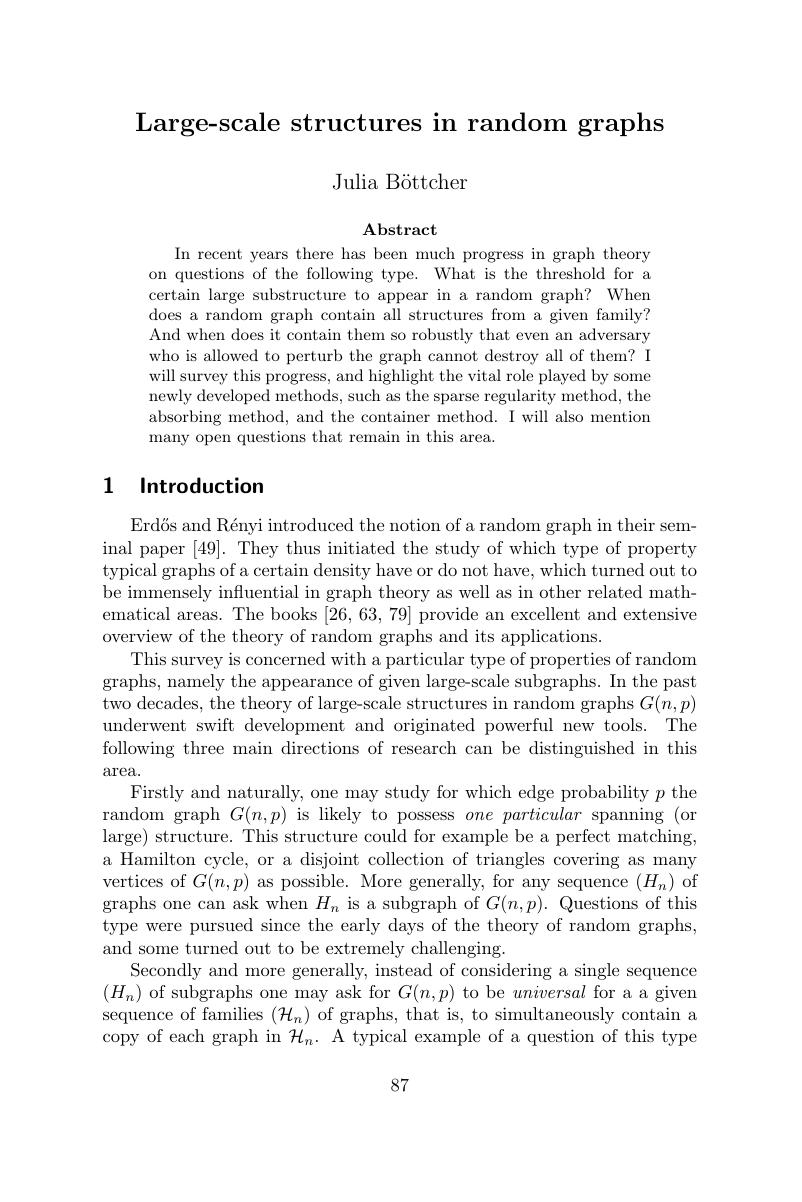Book contents
- Frontmatter
- Contents
- Preface
- 1 Relations among partitions
- 2 Large-scale structures in random graphs
- 3 The spt-function of Andrews
- 4 Combinatorial structures in finite classical polar spaces
- 5 Switching techniques for edge decompositions of graphs
- 6 Ramsey-type and amalgamation-type properties of permutations
- 7 Monotone cellular automata
- 8 Robustness of graph properties
- 9 Some applications of relative entropy in additive combinatorics
- References
2 - Large-scale structures in random graphs
Published online by Cambridge University Press: 21 July 2017
- Frontmatter
- Contents
- Preface
- 1 Relations among partitions
- 2 Large-scale structures in random graphs
- 3 The spt-function of Andrews
- 4 Combinatorial structures in finite classical polar spaces
- 5 Switching techniques for edge decompositions of graphs
- 6 Ramsey-type and amalgamation-type properties of permutations
- 7 Monotone cellular automata
- 8 Robustness of graph properties
- 9 Some applications of relative entropy in additive combinatorics
- References
Summary

- Type
- Chapter
- Information
- Surveys in Combinatorics 2017 , pp. 87 - 140Publisher: Cambridge University PressPrint publication year: 2017
References
- 3
- Cited by

